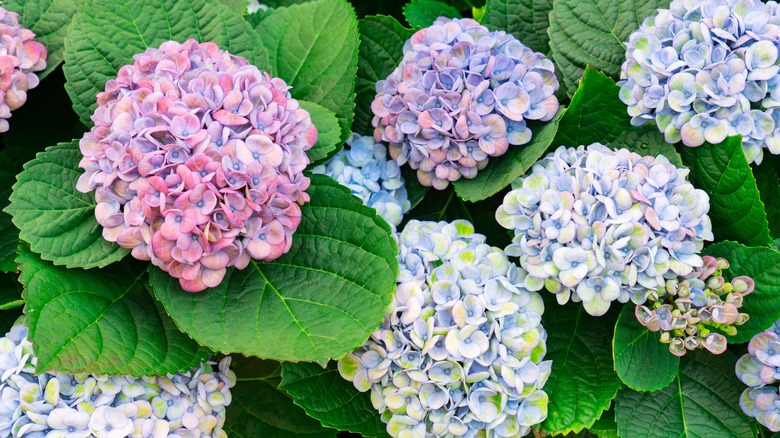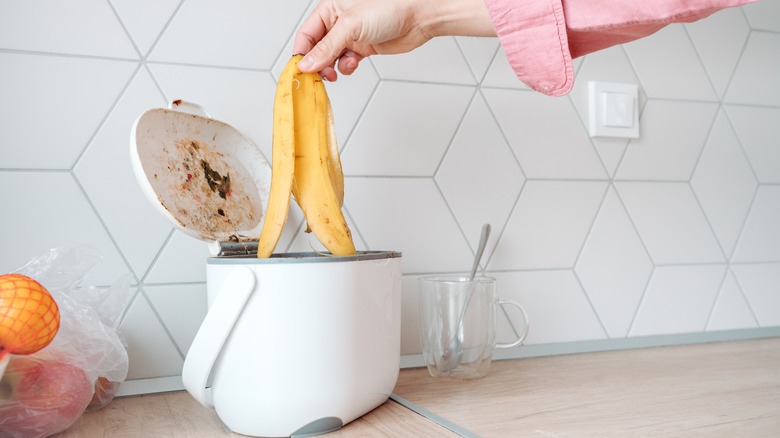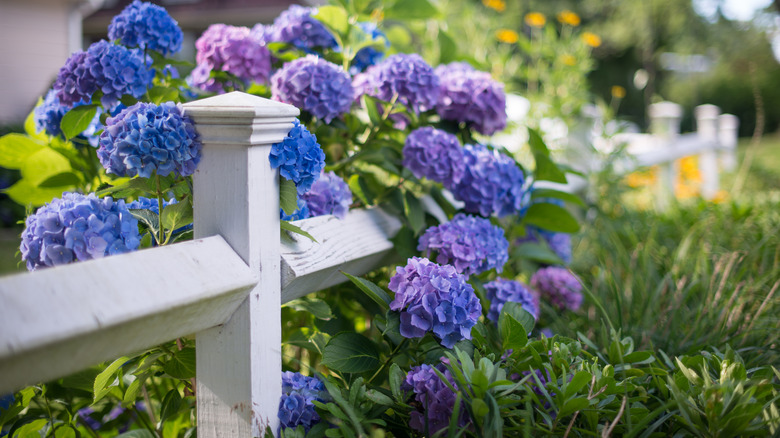Why Gardeners Are Burying Banana Peels With Their Hydrangeas (& Should You Try It?)
If you've ever heard the recommendation to bury banana peels in your garden to promote blooms on hydrangeas and other flowering plants, you're not alone. It is a popular piece of advice and is based on the fact that banana peels are high in potassium, an essential nutrient for plants. Unfortunately, that doesn't mean that sticking a banana peel in your garden is the best way to help your plants.
While banana peels will break down eventually if you bury them in the garden, this process uses nitrogen, temporarily tying it up and making it unusable for your plants. As nitrogen is an essential nutrient for plant growth, the last thing you want to do is prevent the nitrogen in your plants' soil from being usable. Therefore, instead of allowing your banana peels to break down in your garden, it's best to send them to the compost bin and add them to your hydrangeas only as fully broken down compost.
Compost your banana peels instead
When simply left out on the ground, banana peels can take a surprisingly long amount of time to break down, sometimes even years. While they may not take quite as long if they are buried in dirt, it is still likely far longer than if they make their way into a healthy compost bin. In a well-maintained compost bin, it rarely takes longer than four months for food scraps to break down enough to use in the garden.
You also don't need to worry about the microbes that break down the banana peel robbing your hydrangeas of nitrogen if they're doing their work within a compost pile instead of in your garden. Just make sure you aren't creating a compost pile exclusively of banana peels but are instead adding both "greens" (wet material) and "browns" (dry material). As long as you remember to turn your compost pile and have a healthy mix of ingredients in it, you should have beautiful finished compost to add to your hydrangeas in no time.
Better ways to fertilize hydrangeas
Hydrangeas are generally considered heavy feeders, so don't be surprised if your plants require fertilizer in addition to compost. While compost does contain nutrients, it is best to think of it primarily as a soil amendment instead of a fertilizer. Gardeners should be prepared to add fertilizers even if they are using significant amounts of compost. Be sure to check the health of your soil with a soil test before adding fertilizer, though. Too much fertilizer can be just as bad as, if not worse than, not enough.
You should plan to fertilize your hydrangeas with a balanced fertilizer, which should generally be applied in spring and early fall. A fast-acting fertilizer can also be used if necessary if you notice yellowing leaves. Don't forget to check your soil's pH as well, as hydrangeas generally perform best in acidic soil, and Hydrangea macrophylla even develops beautiful blue flowers in lower-pH soil.


